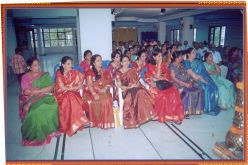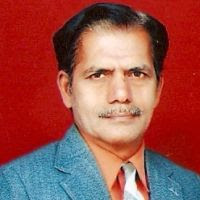


Dr. Hampa.Nagarajaiah, lives in Bangalore for the laot 40 years.But he is of village origin.He was born and bred at a village called 'Hampasandra' about 200 k.ms away from Bangalore.Even now he has maintained a strong touch with his village.
CARREER AND ACHIEVEMENTS Dr, Hampa. Nagarajaiah took his early education in his native village, neibhouring towns, and then in Mysore, at the famous Maharaja's college. He finished his post-graduation in kannada litereture in 1959 and soon got appointment as lecturer in kannada. He served in vaious capacities like professor, dean of arts faculty etc, andwas retired in 1996.He is loved by his students even todayand that is his best asset, as he conciders it.
Along with teaching, he took to the habit of authorship, and he hit bounderies and sixers from the very beginning.He was the pioneer writer to write big books in kannada on linguistics and Dravidian linguistics.(at the age of 30).He wrote two novels, literery criticism, essays, books on jainology, so on and so many.
Dr. Hampa. Nagrajaiah, has delivered guest lectures at various universities both in and outside India.He has toure United States and Europe many times as an invited scholor.
His main field of work is -epigraphy , history, textual editing(of old litereture) and temple architecture. All these are mainly related to Jainology.
AWARDS Dr. Hampana has virtually bagged almost all awards meant for scholors in karnataka. Forign schlors have expressed very good opinion on his books in English.
Some of his English books are-
1Later Gangas- Mandali Thousand.
2 History of Rashtrakutas of Malkhed and Jainism
3 Opulant Chandragiri
4 Bahubali-story and Sculpture
5 Manasthamha-Piller of jaina image
6 Jina Parsva temples in karnataka
7 Indra in Jaina iconography, etc
FAMILY Dr.Hampa. Nagarajaiah is very fortunate on his family side also. He married his six year classmate Kamala in 1961, much against to the will of his parents and religious customs, as she belonged to a lower caste.But, by her schlorship and soft behaviour, she won the love and respect by all family members in her husband's family and commands a greater love even now.HErself being an eminent writer and orater, she has served in the teaching post for 38 years. This couple have 3 children all well settled in life, eldest son being an eminent architect in Bangalore. Prof .Hampana could be conatcterd at- hampana@yahoo,com
also see:
http://hubpages.com/_o85hhbz9dfvv/hub/_Dr_Kamala_Hampana-Eminent__lady_writer_fron_Karnataka






















































